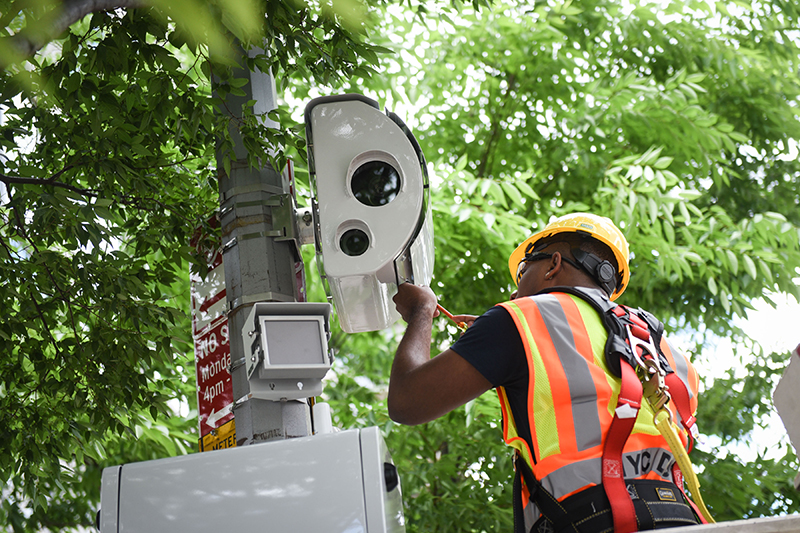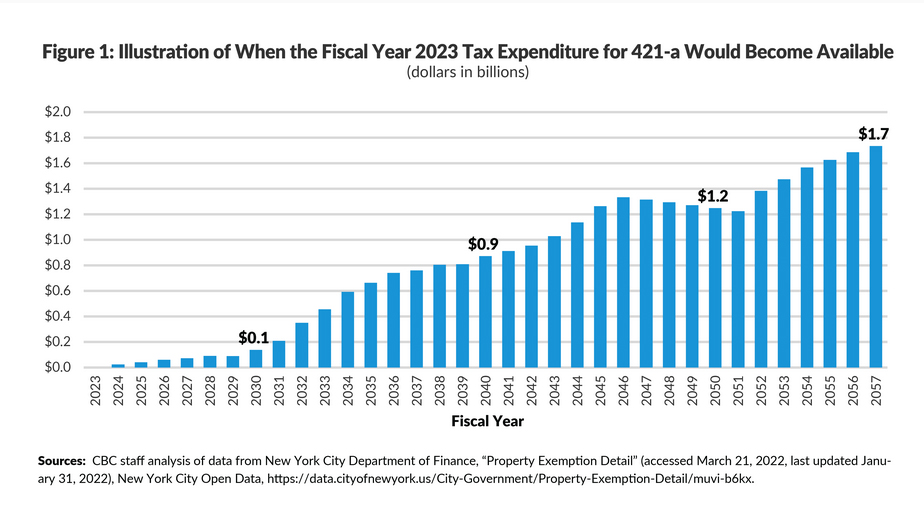OP-ED: Local Control Will Help Prevent Deadly Crashes
To save lives, Albany must act before the end of current session
By Assembly Member Jessica González-Rojas and Commissioner Ydanis Rodriguez
On a late Saturday evening at about 11:30pm in October, 2020, Earl Hall, a 48-year old resident of Jamaica, Queens tried to cross Linden Boulevard near Bedell Street, a residential part of the neighborhood, as he headed to the store. At that time, New York City had already been gripped by the pandemic for about seven months: access to movie theaters, night clubs and indoor dining were all still severely restricted. With so few recreational outlets, especially for the young, Queens had already seen a disturbing upturn in high-speed driving — especially overnight and on weekends.
And so it was to be this night. As Mr. Hall crossed Linden less than a block from his own home, a Ford Mustang GT came suddenly speeding down Linden — he was hit, and knocked unconscious, suffering severe head trauma. Despite the best efforts of neighbors who called 911 and EMTs who arrived quickly after the crash, he was declared dead at the scene, leaving behind a stunned and grieving family. Meanwhile, the driver of the Mustang fled the scene — another high-speed hit-and-run crash of the sort we have also seen too often under the pandemic.
Across the country, high-speed crashes have increased dramatically over the past two years. There can be no excuse for criminal reckless driving, and we are grateful that the NYPD investigation resulted in an arrest in this case. But we know we have the tools in New York City to help prevent deadly crashes like this one — because this fatality happened within one of the 750 school zones Citywide that are protected by school speed zone cameras.
However, because of a state law that limits cameras’ operation to 6am until 10pm on weekdays, the cameras nearest the crash were turned off that night. That is why we two – representing legislators concerned about traffic safety and the Administration of Mayor Eric Adams—have joined together to call on the state legislature to change that law, and allow cameras to operate 24/7. In fact, we are now pushing for Albany to grant New York City full local control of traffic laws governing automated enforcement.
We believe that to that to stop such senseless tragedies, changing the law is just common sense. Since the start of the pandemic, the number of deaths that happen when speed cameras are turned off has surged — and now represent 60 percent of all fatalities (prior to the pandemic, deaths in these hours represented fewer than half of fatalities). As New York City has started to recover and has opened up, the bad habits and worse consequences of overnight speeding have been very hard to break. We believe that New York City needs to be able to control its own destiny, so we can quickly make the changes that meet this current crisis – and local control will help us do that.
We know speed cameras save lives, as they reduce speeding by over 70 percent in school zones – where we have seen traffic injuries decline by 14 percent. While cameras cannot and do not prevent every fatal crash, they clearly create a culture of accountability for drivers that makes our streets measurably safer. In fact, while pedestrian deaths have skyrocketed nationwide during the pandemic, New York City’s pedestrian fatalities have remained relatively stable – we believe in large part due to the presence of speed cameras.
We need to expand that protection, including greater control of where these cameras can be located. Supporters of local control, including families of crash victims, have traveled to Albany this month, united around this legislation. As the Mayor has said, we need to be as focused on traffic violence as gun violence because “traffic safety is public safety.”
Under the leadership of Speaker Carl Heastie, Majority Leader Andrea Stewart-Cousins, and Governor Kathy Hochul, we have an enormous opportunity to make our streets safer. Changing these state laws will not bring crash victims like Earl Hall back—but could prevent more lives like his being needlessly lost on our streets in the years ahead.
Jessica González-Rojas represents the 34th Assembly district in Queens. Ydanis Rodriguez is New York City’s Transportation Commissioner.






 First, most development projects receiving 421-a benefits, particularly under the current version of the program, would not have been built without the incentive. Furthermore, CBC’s analysis shows that the foregone revenue will decrease by less than $100 million per year through fiscal year 2029, and it will take until fiscal year 2043 for $1 billion of the currently foregone revenue to be returned to the tax roll.
First, most development projects receiving 421-a benefits, particularly under the current version of the program, would not have been built without the incentive. Furthermore, CBC’s analysis shows that the foregone revenue will decrease by less than $100 million per year through fiscal year 2029, and it will take until fiscal year 2043 for $1 billion of the currently foregone revenue to be returned to the tax roll. To improve affordability and catch up to past population and job growth, New York City needs to produce more housing of every kind, including both affordable and market-rate rental units. A successor to 421-a is a key component of a broader package of policies and programs needed to boost housing production, which should also include reducing construction and operating costs, increasing as-of-right zoning capacity, and reforming the property tax. Allowing 421-a to expire without a successor will result in less rental housing construction, significantly less affordable housing development (both overall and especially in high opportunity areas), and in the long run, less property tax revenue for the City.
To improve affordability and catch up to past population and job growth, New York City needs to produce more housing of every kind, including both affordable and market-rate rental units. A successor to 421-a is a key component of a broader package of policies and programs needed to boost housing production, which should also include reducing construction and operating costs, increasing as-of-right zoning capacity, and reforming the property tax. Allowing 421-a to expire without a successor will result in less rental housing construction, significantly less affordable housing development (both overall and especially in high opportunity areas), and in the long run, less property tax revenue for the City.